All about sunroof hinges
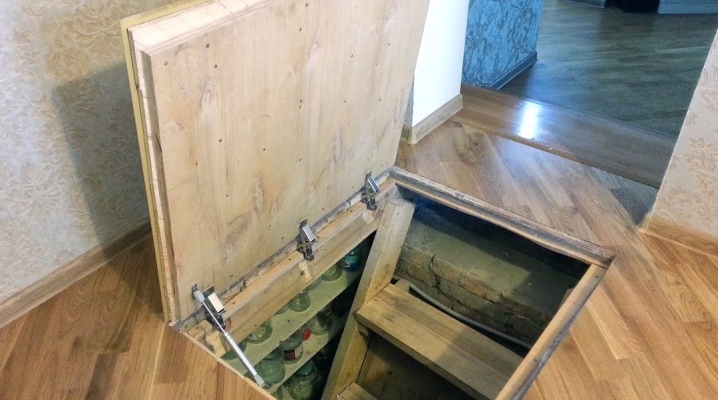
When equipping the entrance to the basement or hatch, you should take care of the reliability and safety of the structure. To prevent the use of the basement from being dangerous, you need to mount strong hinges that can withstand specific loads.


Description and purpose
The basement in a house or garage should be blocked, since the safety of everyone living in the house, as well as the aesthetic appearance of the room, depends on this. For this purpose, a door is tightly mounted on the cellar, preventing cold air masses from entering the house. Usually the entrance to the floor is closed with a hatch, which is fixed with hinges.
Hinges for the hatch are a special mechanism by which the door is attached to the base. When closed, this canopy is difficult to notice, so they are often referred to as secret.
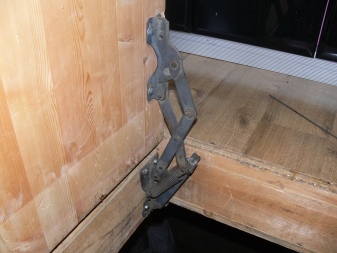
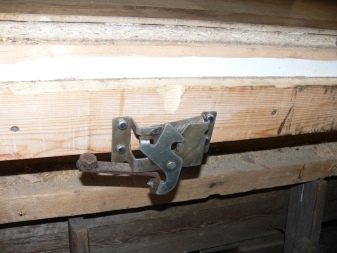
Thanks to the use of hinges for the lifting mechanism, the serviceability of opening the doors and the ability to hold the load of their mass is ensured.
Canopies can be made of different materials, usually galvanized steel. The characteristics of this material provide the products with reliability, corrosion resistance and durability. The use of hinges on the floor hatch allows you to hold 35 kilograms of load. There is a spring in the canopy mechanism, due to which the door closes automatically. And to open the latter, you need to make some effort.
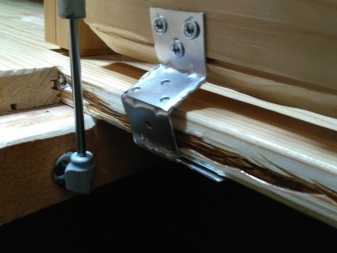
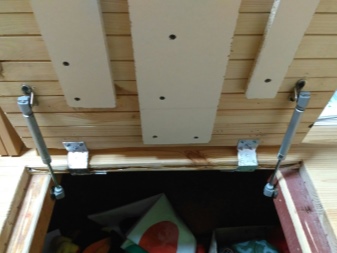
The main characteristics of the hatch hinges are as follows:
- reliability and strength of the connection;
- high-quality swivel mechanism, which is achieved by minimizing backlash between the moving parts of the structure;
- service availability;
- convenient installation;
- neatness and attractive appearance of devices.
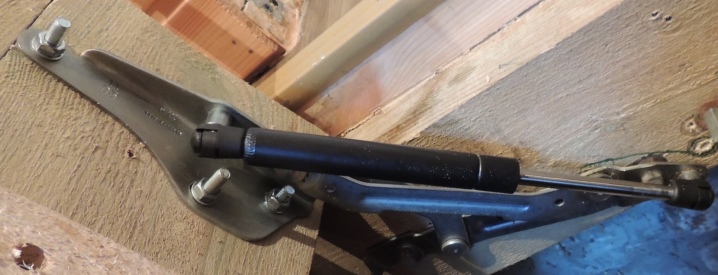
Species overview
If you use poor quality hinges when arranging basement doors, then you can count on a quick loosening of the structure and difficulty in using it. Therefore, the master should make the right choice of awnings, taking into account the following criteria.
- The quality of the products. There are often inexpensive models on sale that cannot withstand the weight of the hatch. In this regard, it is recommended to purchase goods of a medium and high price category, since the reliability of the structure depends on them.
- The dimensions of the hatch. If the dimensions of the hatch cover are large, then more hinges will be required.
- No wedge. The characteristics of the mechanism must be adjusted so that the door does not jam with regular use of the hatch.
- The ability to carry out maintenance.

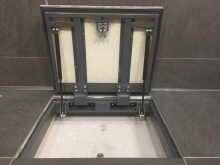
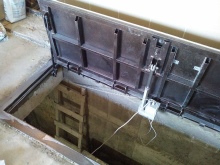
During the installation of hatches and doors for the cellar, the following types of hinges can be used.
- Simple corner overhead. Such devices are attached on one side to the hatch, and on the other, to the floor or wall. The cost of a product in this category is influenced by its reliability and decorativeness. The most expensive are forged canopy options. Overhead hinges consist of 2 plates, their installation is straightforward.
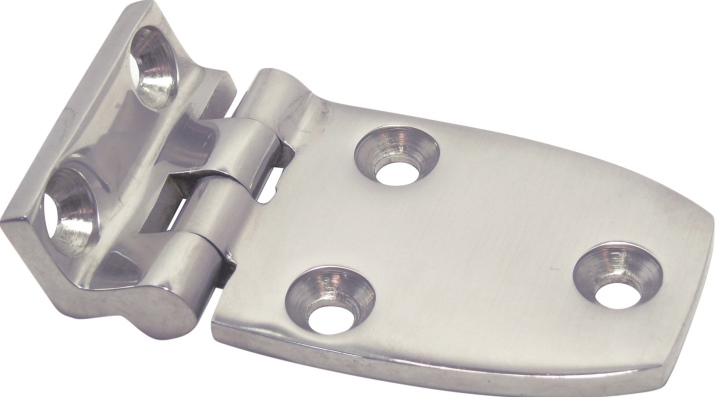
- Hidden. Hinges of this type are mounted in ceilings, internal frames, so that the basement door can be displayed on the same level with the floor. Products can have different shapes and sizes.
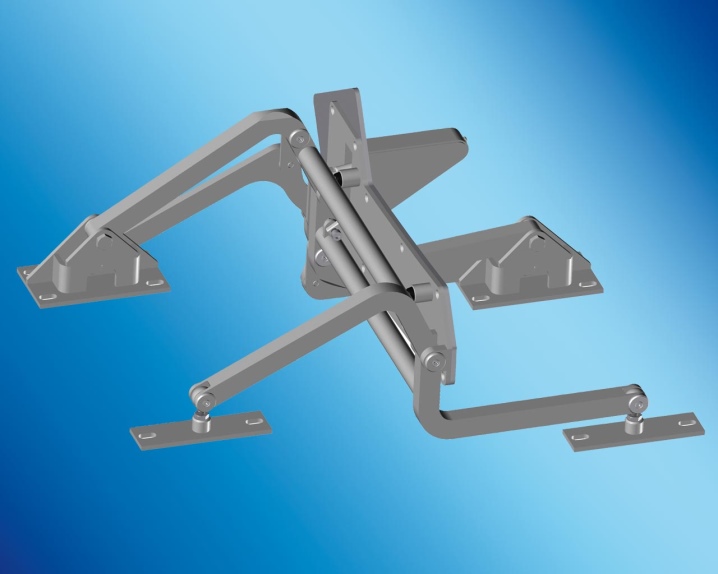
- Mechanisms with drives are capable of automatically opening and closing a heavy and massive hatch. Such hinge models are retractable and folding.
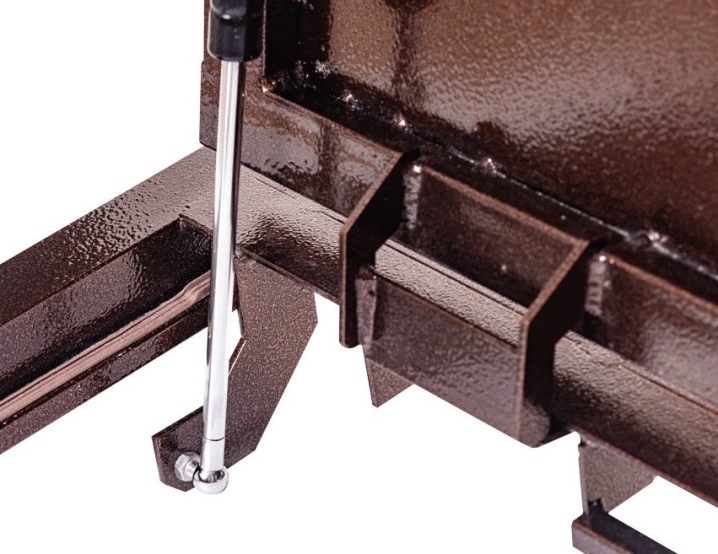
- Pantograph hinges. These awnings ensure that the hatch moves up and then out to the side. The use of such loops facilitates entry without any difficulty.Pantographs are readable as the best option for hidden hatches with tiles.
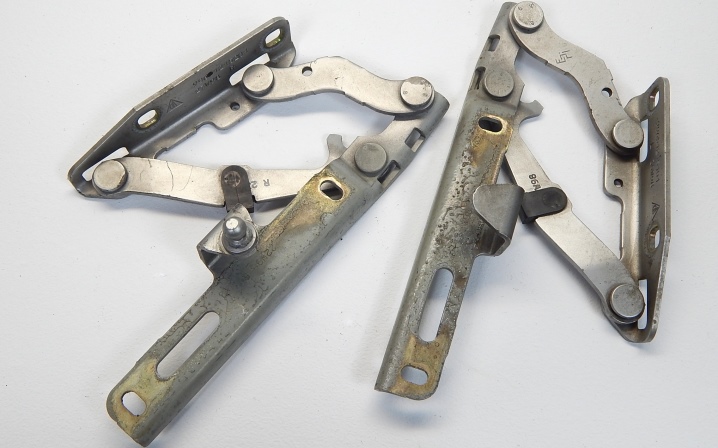
- Gas, or shock absorbers. They also include an emphasis and a closer, they simplify the lifting of the hatch and its fixation in the required position. Many consumers prefer this type of awnings, since they make opening the hatch much easier.
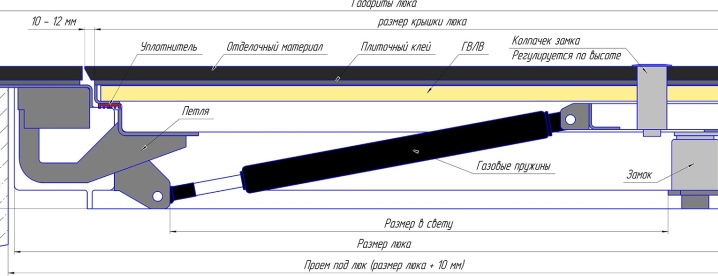
- Scissor hinges have found their way into homemade hatch structures. With this device, you can hide the internal mechanisms. Scissor-shaped awnings are characterized by good functionality and durability.
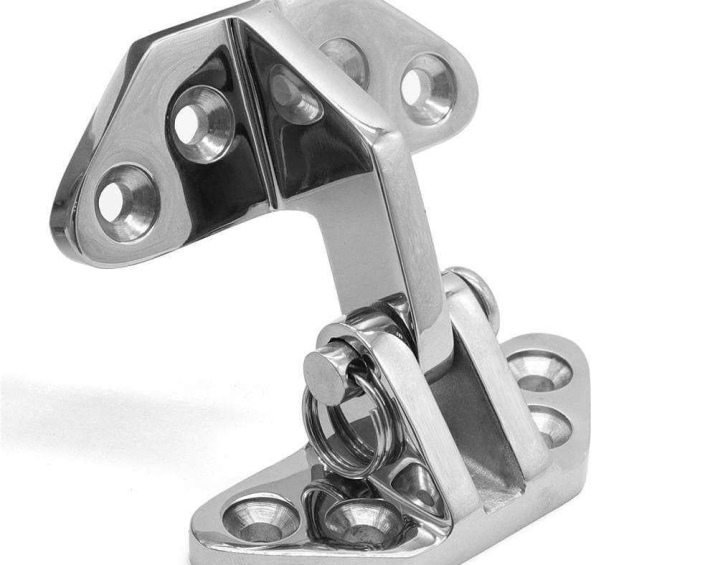
- Invisible or concealed hinges-brackets have a wide part, which is curved in the form of a question mark, as well as a small base. With the help of the latter, the canopy is fixed to the frame of the structure.
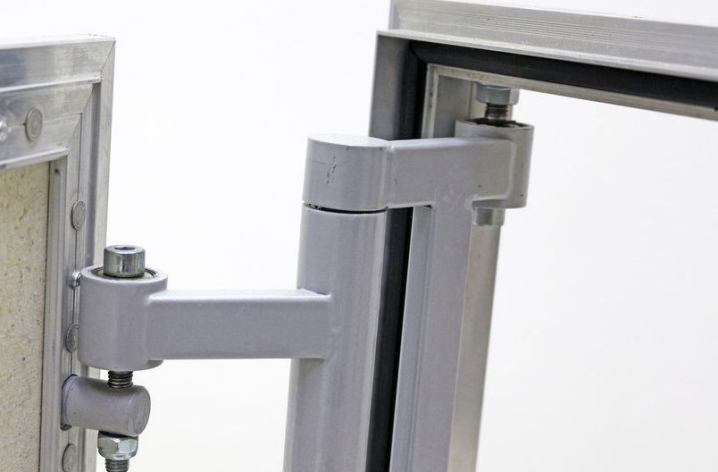
According to the types of opening, hatches are divided into hinged and sliding. Hinges for hatches are made from the following types of metal.
Steel
Steel canopies are considered the most durable and durable. Adjustable canopies made of steel are able to correct the position of sagging doors.
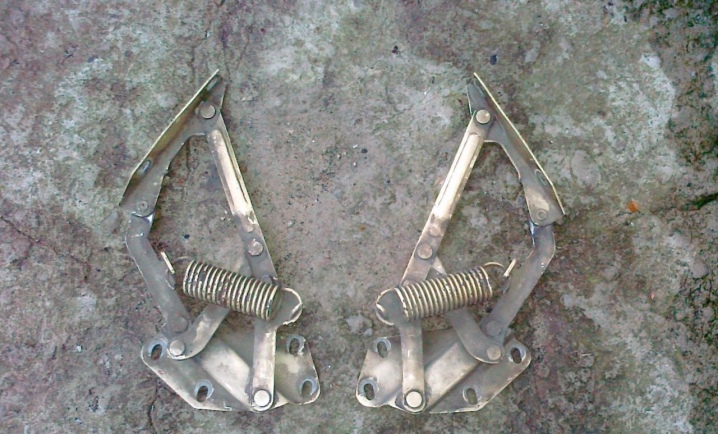
Aluminum
Parts are cast from a special alloy, which contains not only aluminum, but also steel. Such awnings are operated comfortably and for a long period of time.

ECP
Hinges of this type are made from silumin in combination with aluminum. The maximum load of such products does not exceed 5 kilograms.

Mounting
In order to properly install awnings on the hatch or cellar door, you will need to follow the steps below.
- Decide on the side into which the door will open. Carry out the selection of the most suitable mechanism.
- Mark the locations of the future mounting of the hinges with chalk or pencil.
- Prepare the surface. In the case of fixing the wooden hatch cover, the marking can be omitted, since the awnings are screwed on immediately using self-tapping screws. Metal hatches require early marking and installation of openings for canopies.
- Door installation. For this, it is necessary to put a strip under the end of the door with a thickness equal to the gap between the floor and the door. The mechanism should be opened 90 degrees, applying it to the markings. After that, you should attach the awnings to the intended place and fix them with self-tapping screws or screws.
- Basement floor hatch adjustment. To do this, the doors are slowly opened and closed, while marking the place where the structure is jammed. The next step is to adjust and eliminate the wedge. If the problem is not eliminated by twisting, then the hinges should be removed and reinstalled.
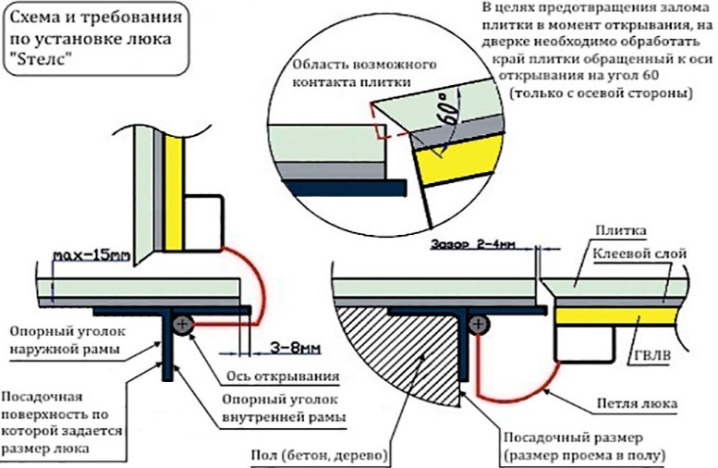
In order for the hatches and basements in the room to be safe and serve as long as possible, the following measures should be taken during construction:
- in housing with children, it is necessary to provide protection against accidental opening of doors;
- trim the outer part of the cover with the same material as the entire floor;
- once every 12 months, it is recommended to lubricate each of the rotary mechanisms using lithol or oil;
- it is advisable to insulate and seal the hatches along the entire perimeter.
When installing hinges on a hatch in a technical room, for example, a garage, it makes no sense to hide them.
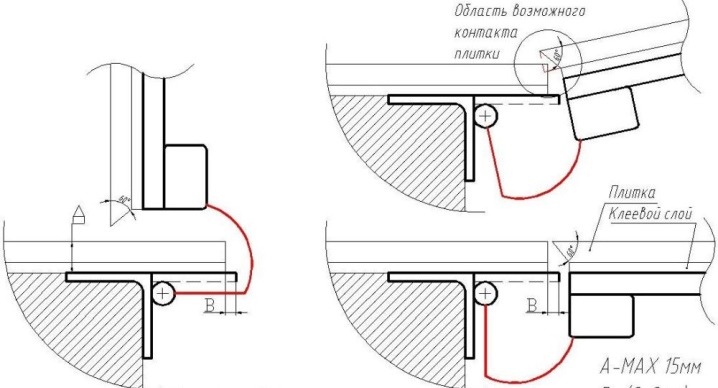
If high pressure is exerted on the hatch, then it is better that its structure in the closed state lies freely on the frame. If the awnings do not interfere, then you can choose the appearance, which is subsequently decorated to match the rest of the interior.
Often, during the installation of doors to the basement and fixing the awnings, the craftsmen make mistakes. A common flaw in the work is to screw on the sunroof awnings before the rest of the flooring is completed. It is allowed to change fasteners only in case of high stability of the frame. The lack of an anti-corrosion coating, as well as antifungal treatment, is considered to be the wrong installation and operation technology. Experts strongly advise against using weak canopies and ignoring their need for lubrication.
Basement hinges with high power can be made by hand, subject to experience with metal and a welding machine. With such work, the complexity can arise only during the adjustment of the cover to the opening.
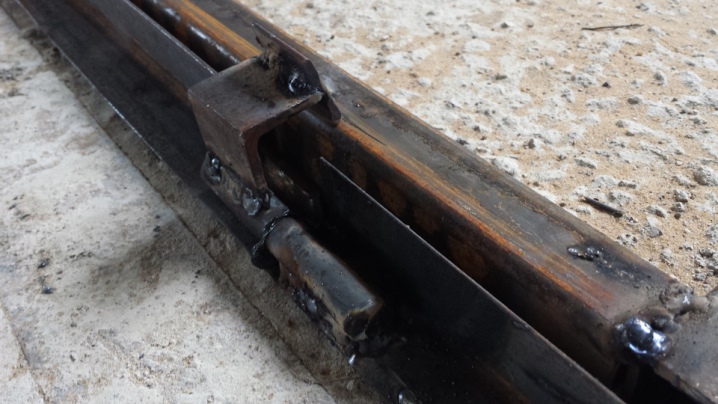
At home, awnings can be made from a profiled pipe with a cross section of 10 by 10 mm.
The result is devices that can withstand high loads from heavy structures.
Stages of making hinges for the hatch:
- a layout of the future canopy is made from flexible wire;
- the pipe is marked into straight segments, of which the device will consist;
- metal is cut using a grinder or an end saw (cuts must be accurate and correct);
- the resulting segment is used as a sample for future loops;
- loops are welded along the joints, first with point tacks, and then completely along the entire seam;
- they clean all welds, achieving accuracy and cleanliness;
- metal is degreased with gasoline;
- ready-made hinges believe in functionality;
- the hatch is fixed in place and attached with the help of self-made canopies.
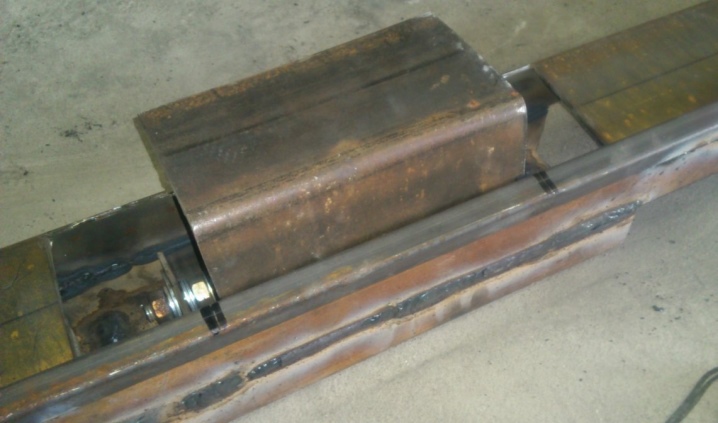
If, after installing the loops, excess areas are visible, then they can be cut off or soldered. There are other options for making canopies for hatches and basement doors with your own hands. If the hatch is bought in a store, then awnings are already included in it. In the absence of desire or skills in making homemade fasteners, it is better to give preference to ready-made store options. Such products are characterized by high indicators of strength, manufacturability, accuracy.
How to make hidden hinges for the hatch, see below.













The comment was sent successfully.